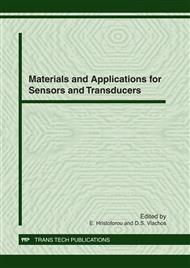p.159
p.163
p.167
p.171
p.176
p.181
p.190
p.194
p.198
The Role of Leadership in High Tech Manufacturing Companies in a Changing Environment
Abstract:
This article aims to examine the role of leadership after a change in the business environment of a company, such as a Merger and Acquisition, in high tech manufacturing companies. Particularly as the number of mergers and acquisitions (M&As) continues to increase and during recession times is one of the most common strategy, more leaders are called upon to to develop their skills an play the most important role for the company strategy. For this purpose both qualitative and quantitative methods are used to examine the effect of leadership after a Merger and Acquisition in some Greek companies that operate in manufacturing business. Findings indicate that in many cases the change that occurs as a result of a merger is imposed on the leaders who have the critical role not only to communicate effectively the company strategy but also to find the correct ways to apply the requested performance management strategies, such as recognition, innovation and others in the new company employees.
Info:
Periodical:
Pages:
176-180
Citation:
Online since:
November 2011
Price:
Сopyright:
© 2012 Trans Tech Publications Ltd. All Rights Reserved
Share:
Citation:


